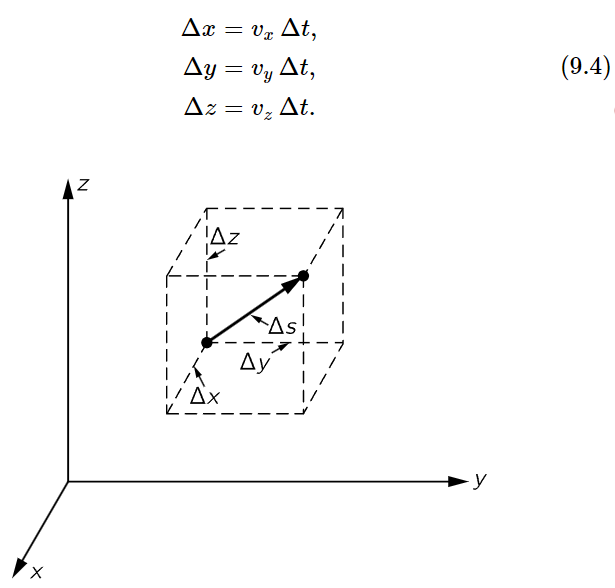
Speed and velocity
 المؤلف:
Richard Feynman, Robert Leighton and Matthew Sands
المؤلف:
Richard Feynman, Robert Leighton and Matthew Sands
 المصدر:
The Feynman Lectures on Physics
المصدر:
The Feynman Lectures on Physics
 الجزء والصفحة:
Volume I, Chapter 9
الجزء والصفحة:
Volume I, Chapter 9
 2024-02-05
2024-02-05
 1348
1348
In order to make our language more precise, we shall make one further definition in our use of the words speed and velocity. Ordinarily we think of speed and velocity as being the same, and in ordinary language they are the same. But in physics we have taken advantage of the fact that there are two words and have chosen to use them to distinguish two ideas. We carefully distinguish velocity, which has both magnitude and direction, from speed, which we choose to mean the magnitude of the velocity, but which does not include the direction. We can formulate this more precisely by describing how the x–, y–, and z–coordinates of an object change with time. Suppose, for example, that at a certain instant an object is moving as shown in Fig. 9–1. In a given small interval of time Δt it will move a certain distance Δx in the x–direction, Δy in the y–direction, and Δz in the z–direction. The total effect of these three coordinate changes is a displacement Δs along the diagonal of a parallelepiped whose sides are Δx, Δy, and Δz. In terms of the velocity, the displacement Δx is the x–component of the velocity times Δt, and similarly for Δy and Δz:

Fig. 9–1. A small displacement of an object.
 الاكثر قراءة في الميكانيك
الاكثر قراءة في الميكانيك
 اخر الاخبار
اخر الاخبار
اخبار العتبة العباسية المقدسة


